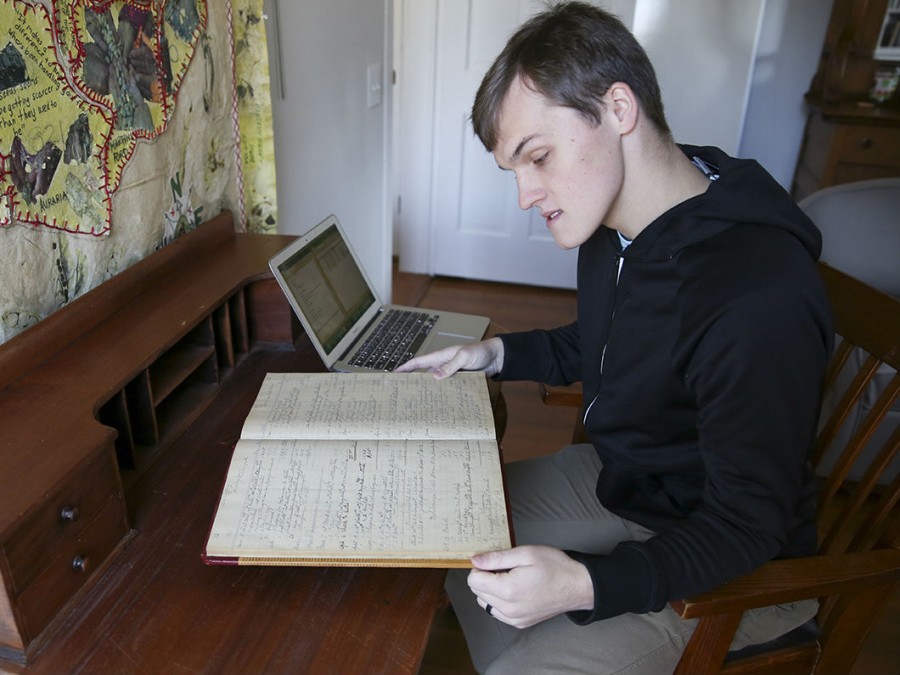A week at Monticello this past summer inspired University of North Georgia student Rosann Kent about the possibilities for the Historic Vickery House, which houses the Appalachian Studies Center on the UNG campus in Dahlonega.
At the Historic Landscape Institute at the former home of Thomas Jefferson on the University of Virginia's campus, Kent learned about recreating what a venue was like during a certain historical period. Upon completing the course to become a Harrison Fellow, she returned to UNG and has been gaining help from various community members to do just that with the landscape at the Vickery House.
Assistant professor Dr. Jameson Brewer's social foundations of education classes have been looking through historical ledgers to see the items purchased by UNG professor Dr. Elias Benton Vickery and his wife, Etta, between 1900 and 1929.
"We know what he planted. We know what seed company he got his seeds from," Kent said. "We can just about reconstruct what was happening in this house and in this yard."
UNG has also been involved in efforts to collect heirloom seeds, which are those that have been passed down from one generation to another, usually because of some desirable trait in the plant such as taste, hardiness, production or uniqueness.
Allison Galloup, special collections and digital initiatives librarian at UNG, has played a major role in helping students comb through the records.
Full-time graduate student Marcia Bennett, who works as an exhibit guide at the Dahlonega Gold Museum, has been sifting through courthouse records to see how Vickery bought the property piece by piece.
"It's been a really interesting process," said Bennett, who is from Omaha, Nebraska. "It's a fascinating house that I don't think a lot of students on campus know about. I really hope that we can change that by figuring out more about how it got to be there."
Patrick Walker, a junior from Woodstock, majoring in history education, has enjoyed finding little details while doing the work as part of Brewer's class. For instance, Vickery bought candy and steaks and imported silk and pearls for his wife.
"It's just someone's grocery list. You have to figure out why it's important," Walker said. "I get to try to figure out what the story is."
The students are looking to piece together how the garden was grown so that as much of it can be recreated as possible. It included a muscadine arbor and a rose garden. Vickery also bought kudzu, a plant that still features prominently at the Vickery House, from another UNG professor.
"We can know better what he planted through primary source research," Kent said.
Marcus Gonzalez, a sophomore from Auburn, majoring in kinesiology with teacher certification, was eager to learn more about his new town through the research. A student in Brewer's class, Gonzalez looks forward to the students' work being compiled for the community.
Brewer appreciates the way his students have embraced the project.
"I was a little bit concerned that it might be viewed as a little bit dull and boring doing transcriptions," Brewer said. "But it seems that the students have really loved it."
Walker said it has allowed him to learn how to piece stories together. Usually his work as a history student has involved looking at other people's work, while this is more hands-on.
"It's interesting getting my toes in the water to see how to think critically about historical documents," Walker said.
Brewer knows this work will prepare his students for their teaching careers.
"Even if they're not going to be history teachers, it's important for teachers to have a sense of connection to the communities in which they're teaching," Brewer said. "And this has been a project that's really given them an opportunity to do that."
Kent is grateful to provide this avenue.
"As we recreate this time period, we want students to be involved in that," Kent said.









